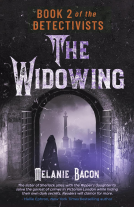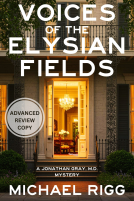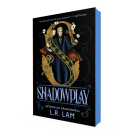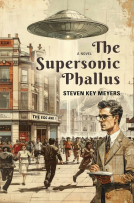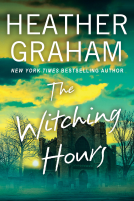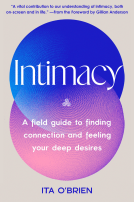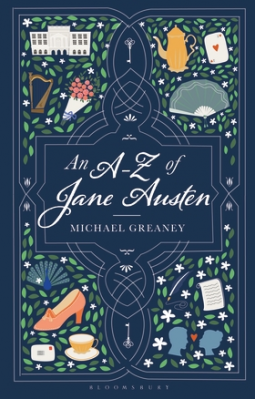
An A-Z of Jane Austen
by Michael Greaney
This title was previously available on NetGalley and is now archived.
Send NetGalley books directly to your Kindle or Kindle app
1
To read on a Kindle or Kindle app, please add kindle@netgalley.com as an approved email address to receive files in your Amazon account. Click here for step-by-step instructions.
2
Also find your Kindle email address within your Amazon account, and enter it here.
Pub Date Oct 20 2022 | Archive Date Nov 15 2022
Talking about this book? Use #AnAZofJaneAusten #NetGalley. More hashtag tips!
Description
"Stuffed full of insights ... Each is a masterpiece in miniature." - Deidre Lynch, Harvard University
"An informative delight." - Devoney Looser, Arizona State University
Jane Austen's richly textured worlds have enchanted readers for centuries and this neatly organized, playful book provides a unique insight into the much-loved writer's way with words.
Using a lively A-Z structure, Greaney provides fresh angles on familiar Austen themes (D is for dance; M is for matchmaking), casts light on under-examined corners of her imagination (R is for risk; S is for servant), and shows how current social and cultural concerns are re-shaping our understanding of her work (Q is for queer; W is for West Indies). Through this approach, we learn how attention to the tiniest linguistic detail in Austen's work can yield rewarding new perspectives on the achievements of one of our most celebrated authors.
Sharply focused on textual detail but broad in scope it broaches questions that, like Austen's work, will intrigue, delight and inspire: Why are children so marginal in her storylines? Who is the best exponent of matchmaking in her fiction? Why are many of her female characters – but none of her heroines – called Jane? Providing a new close-up encounter with one of our most celebrated writers, this book invites a renewed appreciation of the infinite subtlety and endless re-readability of a body of writing in which every word counts.
Available Editions
| EDITION | Paperback |
| ISBN | 9781350254206 |
| PRICE | $17.95 (USD) |
Average rating from 61 members
Featured Reviews
My first thought when I spotted this book was that someone had stolen my idea. Last year I ran my own informal Austen A-Z challenge scouring the alphabet for Austen-ish inspiration. But as soon as I picked this up, I was hooked. An A-Z of Jane Austen is a fascinating frolic through Austen's canon, skipping between the juvenilia and the main novels to shed fresh light on Austen as a writer. For reformed ex-literature students such as myself, this is a rare delight.
Starting at 'A is for Accident' all the way through to 'Z is for Zigzag', Greaney skips down the alphabet and draws out aspects of Austen which are all too easily missed. But rather than mere titbits crowbarred to fit a particular letter, Greaney has essentially put together twenty-six essays which manage to be both light-hearted and deeply rooted in the text. The nerd in me rejoices at this book but one of the best things about it is that I think it can still be enjoyed by the more casual reader.
My Netgalley copy of this book features extensive highlights. I was unaware of its existence when I decided to do Austen in August again this year and yet it ended up being one of the true highlights. One of the observations which particularly stood out to me was Greaney's entry on 'Kindness'. He comments on the 'moral amnesia' of General Tilney and Willoughby who cast off Catherine Morland and Eliza Williams respectively when their purpose has been served. There is a contrast between the civil veneer and the lack of genuine ethical concern. Displays of generosity are not the same as kindness. General Tilney may host Catherine Tilney for weeks but the kind gesture comes from his daughter Eleanor who makes sure that Catherine actually has enough money to make it home. More troubling though about the nature of Regency society however is how Miss Bates and Mr Collins witter on about the kindness of others which does not truly exist. Lady Catherine is not kind but leans on her privilege. So too does Emma Woodhouse who is pointlessly cruel to Miss Bates. Mr Collins has no choice but to brown-nose his way to a better position within the church as he will find no advancement elsewhere. Similarly, Miss Bates has no way of preventing her own steady slide into poverty. Kindness is insufficient in the face of an unjust society.
Greaney truly considers Austen from all angles, chronicling the various vehicles which power the six main novels, whether it be the horses that took them from place to place, the servants who lurk in the background of every scene or the letters which give Austen's work an 'epistolary scaffolding' long after she had abandoned the form. Letters allow Austen's men to speak for themselves, particularly in the case of Darcy's long letter and Frank Churchill's explanation of his marriage. Letters can be co-authored, whether it is Robert Martin asking his sister to help him write his proposal or Emma Woodhouse in assisting Harriet Smith in rejecting it. Willoughby's disavowal of Marianne is dictated by the woman he eventually marries. Henry Crawford directs his sister's correspondence with Fanny Price. Reading and re-reading letters, often with other characters, creates and sustains intimacy. Mr Bennet ridicules Mr Collins' first letter to his entire family. Lydia's letter announcing her elopement is addressed to Mrs Forster but ends up being read by multiple people and eventually her sisters.
Glancing over the chapters to refresh my memory for this review, I am immediately drawn in again. Greaney hits the nail on the head again and again. There is the question of what Austen's view of match-making might be; however we may mock Mrs Bennet, she did bring her closer together with Bingley and also Elizabeth with Darcy. If Jane had been allowed the carriage, she might not have ended up mistress of Netherfield. But still, Greaney points out that it is wrong to categorise Austen's fiction as depicting successful fortune-hunters. It may be the easy view that Austen wrote about women marrying rich men with big houses, but this is not the case. Elinor Dashwood marries a man who has not the income she herself stated to be necessary for a comfortable existence. In marrying clergymen, Catherine Morland, Elinor Dashwood and Fanny Price have a 'reprieve from the implied threat of poverty rather than a passport to fabulous wealth'. When we look at the maligned Mrs and Miss Bates, we are looking at their possible future. And indeed, the character who makes the most advantageous marriage is Maria Bertram and yet it is she who suffers the most short-lived marriage. For most of the characters, poverty is something which can be held at bay but not escaped forever.
Jane Austen was a puzzle, both as a writer and as a person. In A-Z, Greaney seeks to unpack and thus unpick some of the enigma of Austen's opinions and her attitudes and he achieves this with style. But most of all, Greaney has motivated me to re-read yet again. An ideal Christmas present for the Austen fans in your life!
Readers who liked this book also liked:
We Are Bookish
Mystery & Thrillers, OwnVoices, Teens & YA







